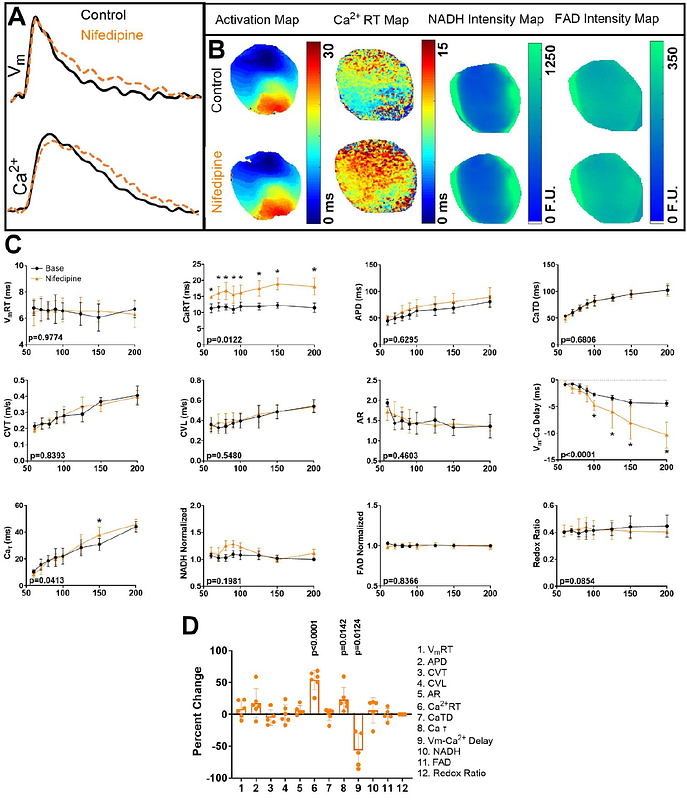Quadruple Parametric Optical Mapping to Measure Cardiac Metabolism-Excitation-Contraction Coupling

Quadruple Parametric Optical Mapping to Measure Cardiac Metabolism-Excitation-Contraction Coupling
Mills, A.; George, S. A.
AbstractCardiac excitation contraction coupling has been studied by recording transmembrane potential (Vm) and intracellular calcium (Ca2+), simultaneously. Recently, imaging metabolic substrates such as NADH in addition to Vm and Ca2+ has been reported to improve our understanding of cardiac physiology and the interaction between these different aspects of heart function, known as metabolism-excitation-contraction-coupling (MECC). In this study, we developed and validated the quadruple parametric optical mapping technique to simultaneously measure Vm, Ca2+ and two metabolic substrates, NADH and FAD. Langendorff perfused murine hearts of both sexes were subjected to either pharmacological interventions: 0.1 uM nifedipine or 0.1 uM flecainide, or pathological intervention: ischemia/reperfusion and the four facets of cardiac function were measured. Hearts were stained with RH237 and Rhod2-AM dyes to measure Vm and Ca2+, respectively. Two LED light sources (520 and 365 nm) were used to excite the dyes and induce NADH/FAD autofluorescence, respectively, and all four optical signals were simultaneously recorded and analyzed to measure 12 parameters of cardiac function. Nifedipine significantly altered Ca2+ related parameters, including increased Ca2+ rise-time and Ca2+ decay, and prolonged Vm-Ca2+ delay. Flecainide significantly affected all three aspects of MECC with increased Vm rise-time and Ca2+ decay, while decreasing conduction velocity (CV) and the redox ratio. Ischemia also altered MECC with increased Vm rise-time and NADH intensity, decreased CV and redox ratio. Using quadruple parametric optical mapping, we demonstrate known cardiac drug response to nifedipine and flecainide and report novel aspects of cardiac function that are modulated by these drugs. These novel drug effects would not have been identified without such a multi-parametric approach to assessing cardiac physiology. Further, we were able to determine chronological changes in MECC during ischemia and reperfusion to better understand the interplay between electrical, mechanical, and metabolic function in the heart.